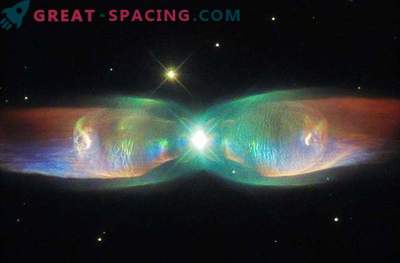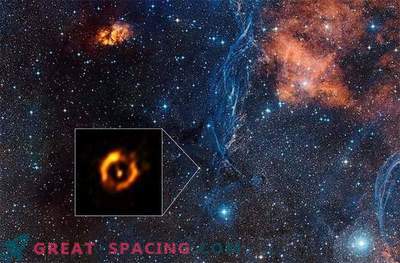
The red giants are ancient stars emitting gaseous material and solid particles in the stellar wind. This leads to the loss of a large amount of mass. However, new observations say that this is not entirely true. The stellar wind does not seem to be stronger than usual, but is influenced by a neighbor that was not previously noticed. This is the second star spinning around a red giant.

New observations from the ALMA telescope (Chile) show how the red giant stellar wind forms a spiral. This is indirect evidence that we see not one star, but part of a pair
Human life does not allow us to cover the entire process of birth, aging and death of a star. The process lasts billions of years. When a star gets older, it grows in size, lowers temperature and turns red. Our Sun is waiting for the same fate in 4.5 billion years.
At the last stage of life, red giants emit mass (gas and other substances) in the form of a stellar wind. Early observations confirmed that a large amount of mass was thus lost. For decades, scientists could not understand how this happens. The red giants are somehow capable of throwing away 100 earth masses per year, and the process lasts for 100-2000 years.

ALMA Observatory in Chile
New observations from the ALMA telescope in Chile shed light on what is happening with two of the red giants. In a particular case, the stellar wind forms a spiral. This is an allusion to the fact that there is a star next to the red giant, which means we have a binary system. The red giant is the main star around which the neighbor rotates. Both affect each other in two ways: the stellar wind stretches in the direction of the second star, and the red giant fluctuates slightly, which gives the stellar wind a spiral shape.
The discovery of the star-neighbor allowed us to get a full picture. We thought that before us the champions in the rate of mass loss, but it is not. Just between two stars there is an area where the stellar wind is much more concentrated due to the gravity of the second star.
Now astronomers are studying whether binary systems can serve as an explanation for other cases of mass loss in red giants. It has always been thought that many stars live alone, but now they have to reconsider this idea.











































